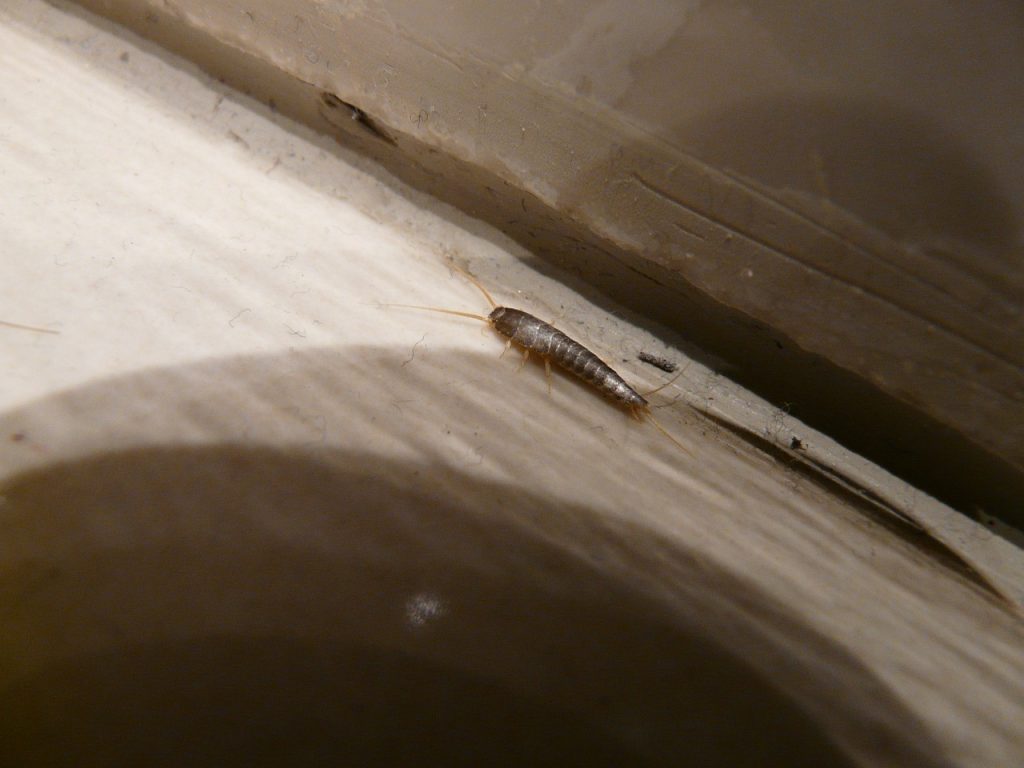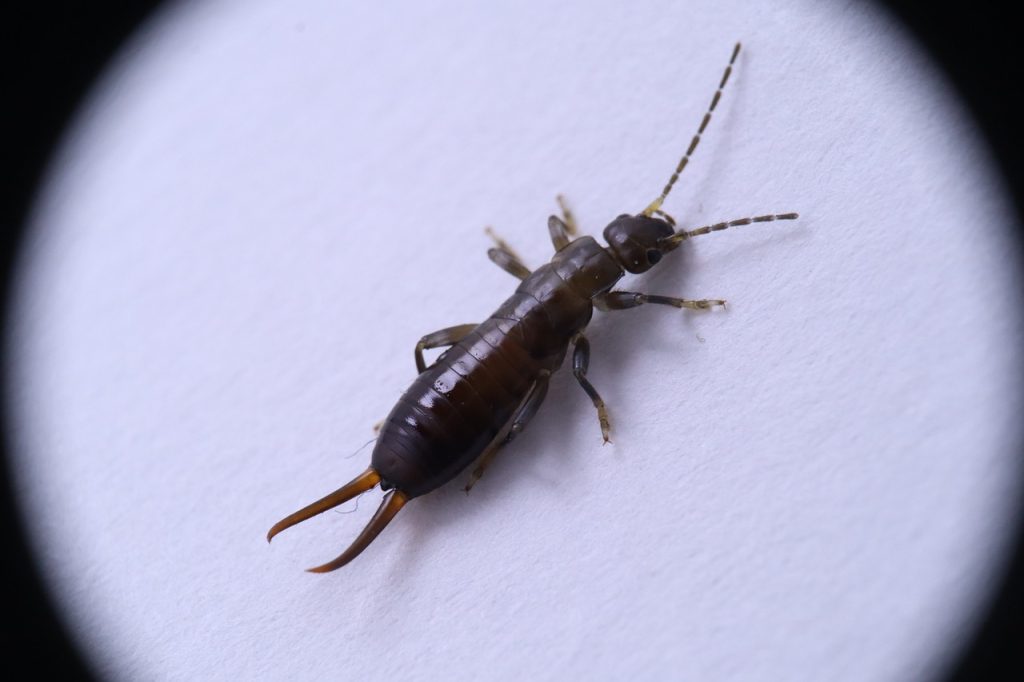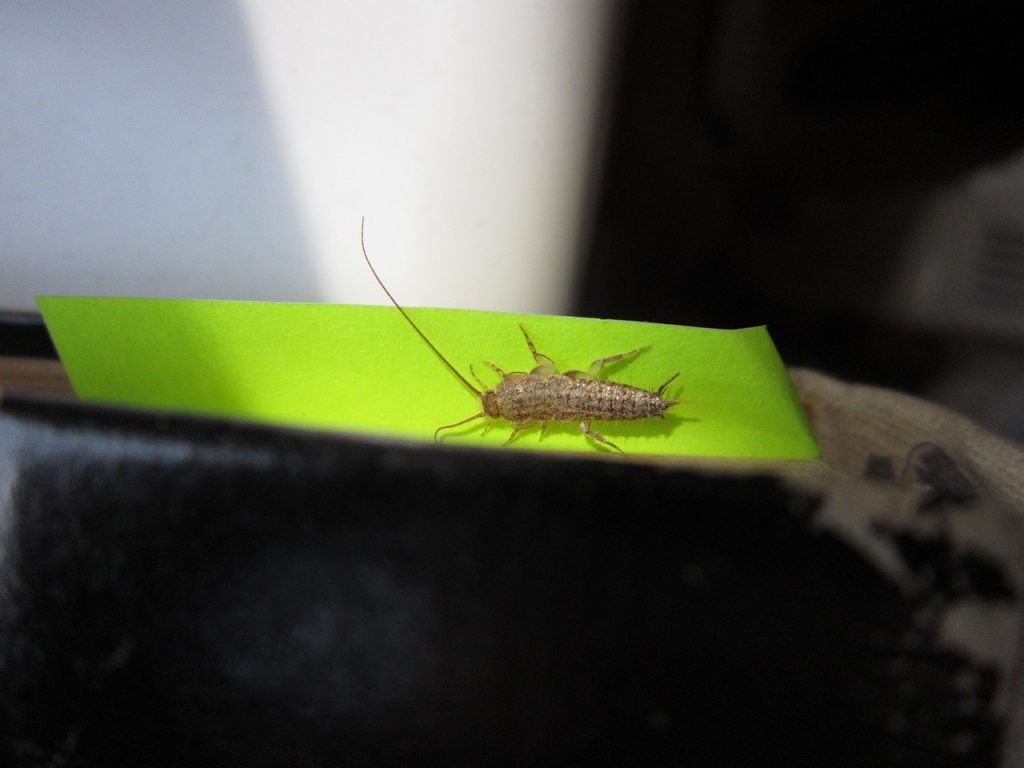According to recent studies, about 84% of homeowners have experienced a pest problem within the past year. Among the most common invaders are silverfish and earwigs, which thrive in dark, damp environments and can cause damage to your home and belongings if left unchecked.
In this blog post, we’ll discuss the nature of silverfish vs earwigs and provide you with valuable insights on how to locate them within your home. From identifying key hiding spots to distinguishing between silverfish vs earwigs, our comprehensive guide will equip you with the knowledge needed to tackle these pests head-on.
How to Find Earwigs and Silverfish in Your Home

Finding an earwig vs silverfish in your home requires careful observation and understanding of their habits. Here are some tips on how to locate these pests:
Check Damp and Dark Areas
Both earwigs and silverfish prefer moist, dark environments. Start your search in areas such as basements, bathrooms, kitchens, and laundry rooms.
Inspect Cracks and Crevices
Use a flashlight to examine cracks, crevices, and other hiding spots where pests may reside. Pay attention to gaps around baseboards, pipes, vents, and electrical outlets.
Look for Signs of Activity
Look out for signs of earwig or silverfish activity, such as droppings, shed skins, or damage to paper, fabric, or other starchy materials. Silverfish may leave behind yellow stains or holes in clothing, books, and wallpaper.
Check Moisture Sources

Since both pests like moisture, inspect areas prone to leaks or excess humidity, such as under sinks, around plumbing fixtures, and near water heaters.
Use Traps or Baits
Set up sticky traps or bait stations in areas where you suspect earwigs or silverfish activity. These traps can help capture and monitor pest populations.
Monitor Outdoors
Earwigs and silverfish may also enter your home from outdoor areas. Inspect exterior walls, foundation cracks, and door thresholds for signs of entry or nesting.
Silverfish vs Earwigs: Key Attributes
Now that you know where to look for earwigs vs silverfish, it is important for you to be able to tell the two apart. Understanding their characteristics and habits can help you differentiate between them and take appropriate action.
What to Know About Earwigs

Earwigs, scientifically known as Dermaptera, are nocturnal insects characterized by their elongated bodies and pincer-like appendages at the rear. These insects typically measure about 0.5 to 1 inch in length and are dark brown or black in color. One of the distinctive features of earwigs is the pair of cerci, or forceps-like structures, located at the end of their abdomen.
Earwigs are commonly found in damp, dark areas such as basements, bathrooms, and kitchens. They are attracted to moisture and organic matter, making them frequent inhabitants of mulch, decaying leaves, and compost piles. While earwigs are capable of inflicting minor pinches with their cerci, they are not considered dangerous to humans or pets.
Bugs That Look Similar to Earwigs
Some insects that look like earwigs can cause confusion for homeowners. These include:
- Cockroach Nymphs: Young cockroaches, particularly German cockroaches, resemble earwigs due to their similar size and coloration.
- Ground Beetles: Certain species of ground beetles share a similar elongated body shape with earwigs but lack the characteristic pincer-like appendages.
- Centipedes: Although centipedes have many legs and lack the distinctive cerci of earwigs, their elongated bodies may lead to mistaken identity.
What to Know About Silverfish

What is a Silverfish?
Silverfish, scientifically known as Lepisma saccharina, are small, wingless insects known for their silvery-blue color and fish-like movements. These pests measure approximately 0.5 to 1 inch in length and have a flattened, elongated body covered in scales. Silverfish are often found in dark, damp environments such as basements, attics, and bathrooms, where they feed on starchy materials like paper, glue, and clothing.
What Does a Silverfish Bug Look Like?
Silverfish have a distinct appearance that sets them apart from other household pests. They have three long bristle-like appendages at the rear of their bodies, giving them a unique shape reminiscent of a fish. Additionally, their movements are characterized by a smooth, wriggling motion, further distinguishing them from other insects.
Types of Silverfish
Silverfish belong to the order Zygentoma and are classified into several species, including:
- Common Silverfish (Lepisma saccharina): The most frequently encountered species is known for its silver-blue coloration and preference for humid environments.
- Firebrat (Thermobia domestica): Resembling silverfish in appearance, firebrats prefer warmer temperatures and are commonly found near heating appliances or in attics.
Bug That Looks Like Silverfish
Similar to earwigs, silverfish may be mistaken for other insects. Some bugs that resemble silverfish include:
- House Centipedes: With their long bodies and rapid movements, house centipedes can be mistaken for silverfish, especially in dimly lit areas.
- Firebrats: Due to their similar appearance and habitat preferences, firebrats are often confused with silverfish.
Final Words on Silverfish vs Earwigs

As you’ve learned, identifying and addressing pest infestations in your home is crucial for maintaining a safe and healthy living environment. Whether you’re dealing with earwigs, silverfish, or other common household pests, knowing where to look and how to distinguish between silverfish vs earwigs is the first step toward effective pest control.
At NaturalCare Pest Control, we understand the importance of protecting your home and loved ones from unwanted invaders. Our team of experts is dedicated to providing eco-friendly pest management solutions that prioritize your safety and the well-being of the environment.
If you’re struggling with a pest problem or simply want to learn more about how we can help you safeguard your home, don’t hesitate to contact NaturalCare Pest Control today. Together, we can keep your home pest-free and comfortable for years to come.
Frequently Asked Questions About Silverfish vs Earwigs
What are the main differences between silverfish and earwigs?
The main differences between silverfish and earwigs are their physical appearances and habitats. Silverfish are wingless, silvery-blue insects with a fish-like shape and movements, and they prefer dark, damp environments. Earwigs are darker, usually brown or black, and have pincer-like appendages at the rear of their bodies. They are also nocturnal and are often found in moist areas but can venture into more varied environments.
How can I tell if I have silverfish or earwigs in my home?
To determine whether you have silverfish or earwigs, look for the following signs:
Silverfish: Look for small, wingless insects with a silvery sheen and a fish-like shape. They leave behind small holes in wallpaper, yellowish stains, or shed skins in areas like basements, bathrooms, and attics.
Earwigs: Check for small, dark brown or black insects with a pair of forceps-like pincers on their rear. Earwigs might be found in basements, kitchens, or near other damp areas and sometimes in more arid locations like bedrooms and living rooms.
What attracts silverfish and earwigs to my home?
Both pests are attracted to moisture and darkness. Silverfish are drawn to high humidity and sources of starchy materials, like paper, glue, and textiles. Earwigs are attracted to moist environments but will come indoors during dry, hot weather to find humidity. They also seek out organic matter, such as leaves and mulch, and can be found near these food sources.
Are silverfish or earwigs dangerous to humans?
Neither silverfish nor earwigs are dangerous to humans in a direct sense. Silverfish do not bite or carry diseases, but they can damage paper goods, clothing, and wallpaper. Earwigs can use their pincers to pinch if handled or disturbed, but they are not venomous and generally avoid human interaction. They do not spread diseases.
Can silverfish and earwigs live together in one area?
Yes, silverfish and earwigs can occupy the same area if the conditions are favorable for both, particularly in terms of moisture and food availability. However, they typically have different preferences that lead them to different parts of a home.
Do natural remedies work for controlling silverfish and earwigs?
Natural remedies can be effective for controlling both pests. Natural deterrents include cinnamon, cloves, and lavender can be placed in areas where silverfish are found. Diatomaceous earth and boric acid can be used around baseboards and in damp areas to control earwigs without harsh chemicals.


